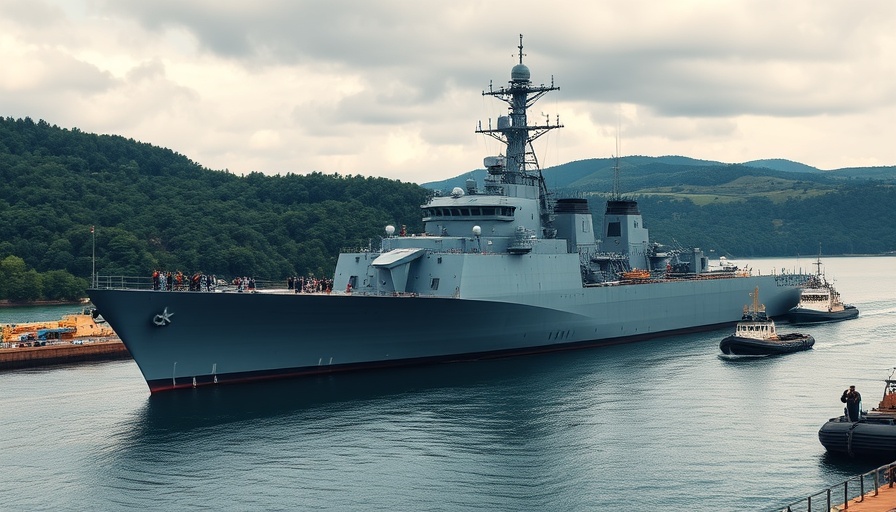
Major Milestone for the Royal Canadian Navy and Seaspan Victoria Shipyards
In a significant event for maritime defense in Canada, Seaspan Victoria Shipyards has successfully delivered the HMCS Calgary back to the Royal Canadian Navy (RCN). This delivery marks the completion of the largest full docking work period (DWP) ever undertaken at Victoria Shipyards, showcasing the facility's commitment to enhancing the operational capabilities of the Halifax-class frigates. As the defense landscape evolves, the importance of maintaining a robust naval fleet becomes ever clearer.
The Scope of the HMCS Calgary’s Refitting
The extensive work completed on HMCS Calgary involved critical upgrades aimed at ensuring the vessel's operational readiness. Over 28 months, a dedicated workforce of more than 1,000 trades personnel and office staff contributed to this extensive project. They performed engineering upgrades, equipment installations, and preventive maintenance during the dry-docking process. This concerted effort not only enhances the ship's capabilities but also extends its service life, ensuring its relevance for years to come.
Why Operational Readiness Matters
The operational readiness of naval vessels like HMCS Calgary is vital for the protection of Canada’s interests, especially in the Pacific region. The RCN’s strategy focuses on ensuring that its fleet can respond effectively to any maritime threats. With geopolitical tensions rising and climate change posing new challenges, sustaining a modern and capable navy is essential for national security. According to recent analyses, navies around the world are prioritizing fleet modernization to adapt to these emerging dynamics.
Canada’s Maritime Industry: A Look Ahead
The delivery of HMCS Calgary to the RCN is not just an isolated event; it’s a marker of broader trends in the Canadian maritime industry. As Seaspan Victoria Shipyards continues to participate in naval modernization efforts, it sets a precedent for other shipyards across Canada. Innovations in ship repair and maintenance practices are expected as the demand for enhanced maritime capabilities grows. The industry is likely to see increased investments in technology and workforce training to keep pace with evolving naval requirements.
Community Impact and Employment Opportunities
Delivering a substantial vessel like HMCS Calgary is not only significant for the navy but also for the local economy in Victoria, B.C. Seaspan Victoria Shipyards employs thousands, and its ongoing projects provide numerous job opportunities in engineering, skilled trades, and support roles. This ripple effect demonstrates how maritime activities bolster local economies and create stability in employment, making a tangible difference to communities involved in shipbuilding.
Conclusion: Encouragement for the Future
The successful refitting and return of HMCS Calgary highlight a robust partnership between Seaspan Victoria Shipyards and the Royal Canadian Navy. As technological advancements in the shipbuilding sector progress, both entities will likely continue to explore innovative ways to enhance naval capabilities. Investing in such projects ensures that Canada maintains a strong maritime presence, which is essential for national defense.
Stay informed about the latest developments in maritime technology and naval advancements. Engage with local shipbuilding initiatives, and consider how they can positively impact your community as well as national defense.
 Add Row
Add Row  Add
Add 




Write A Comment